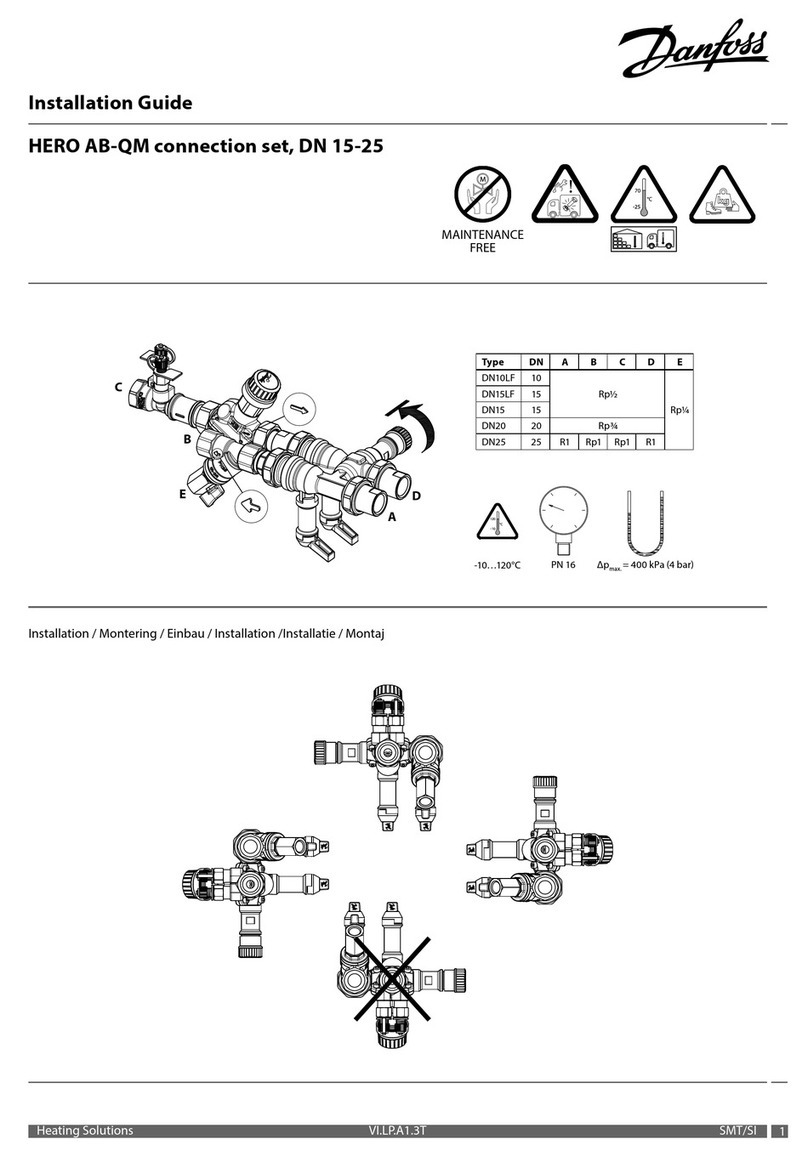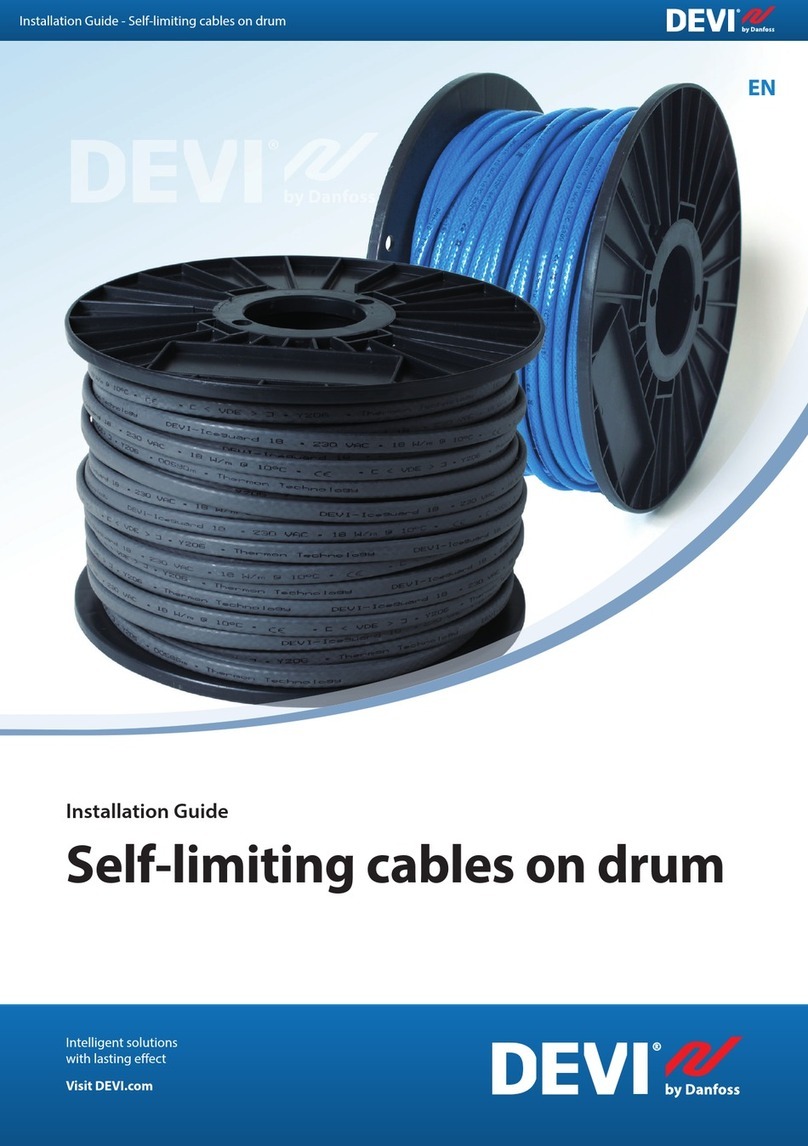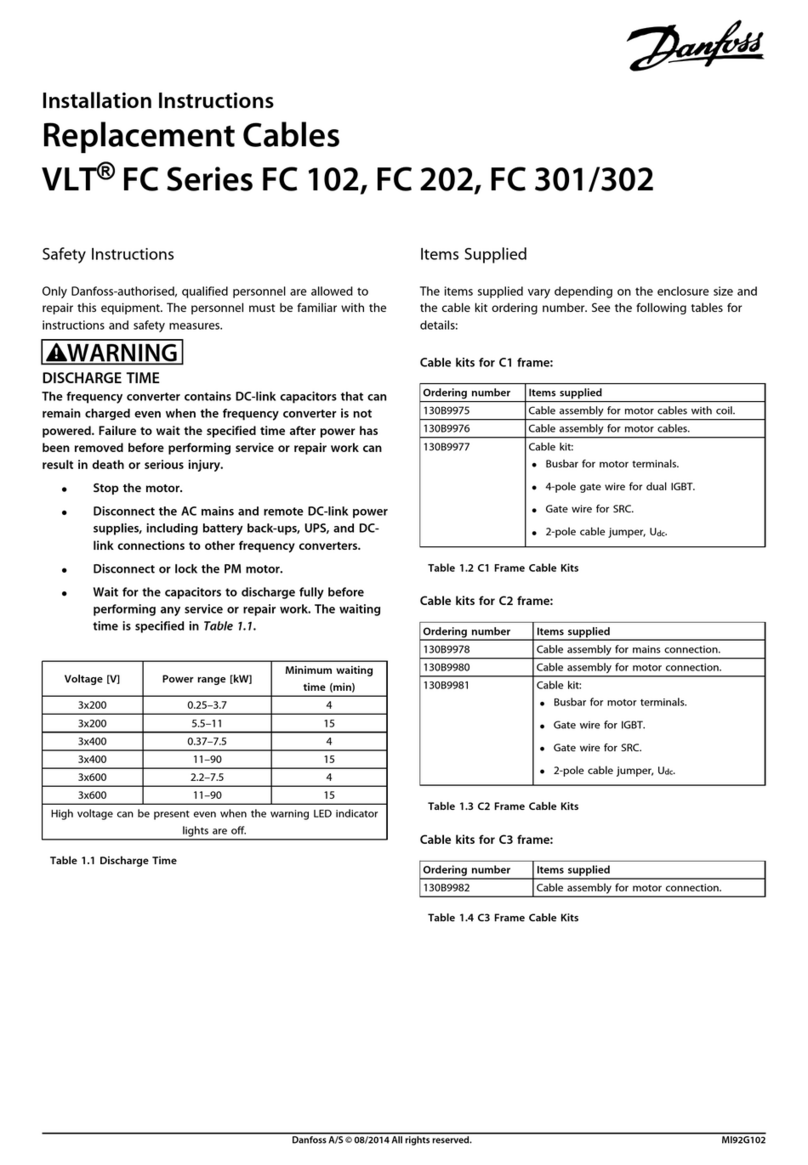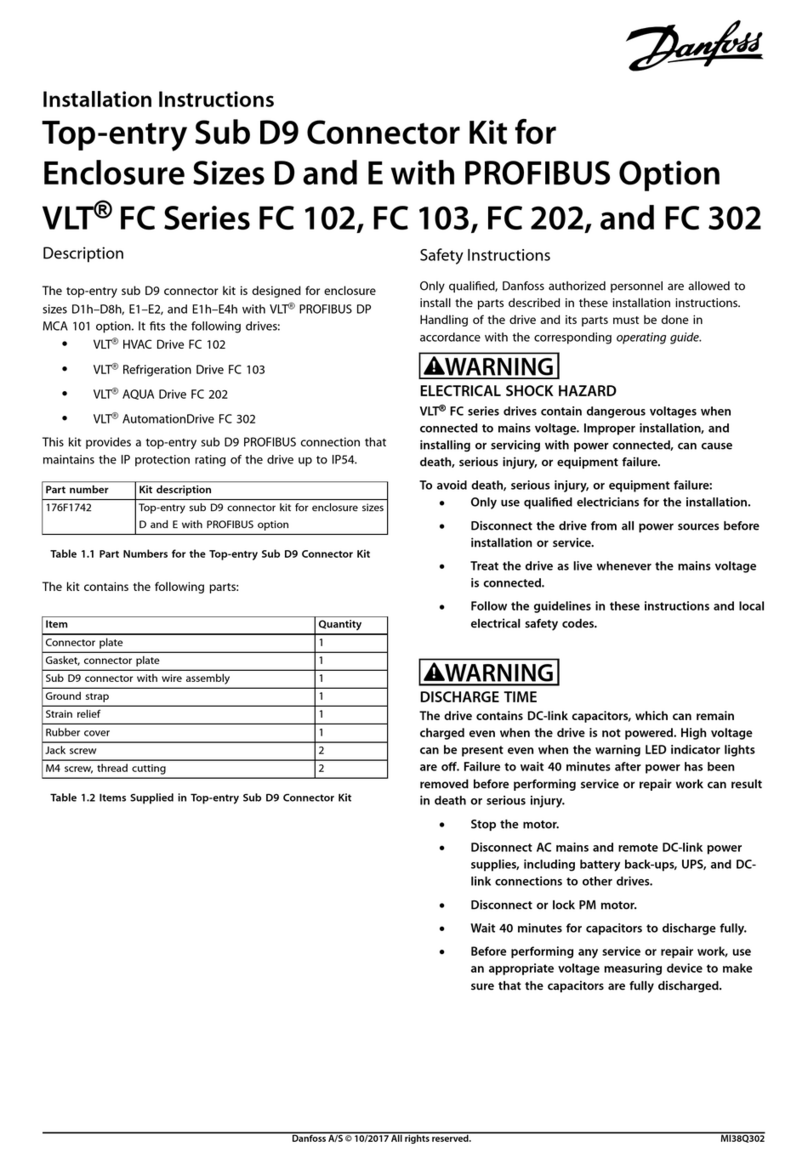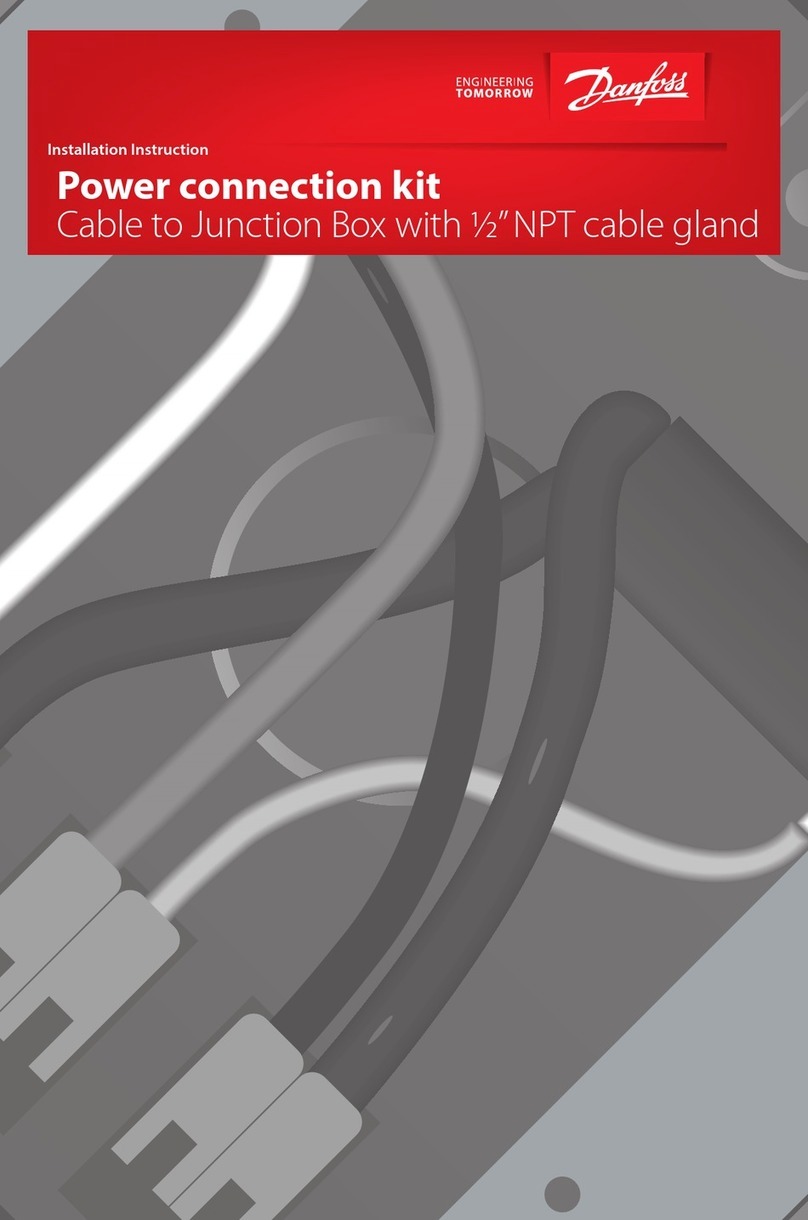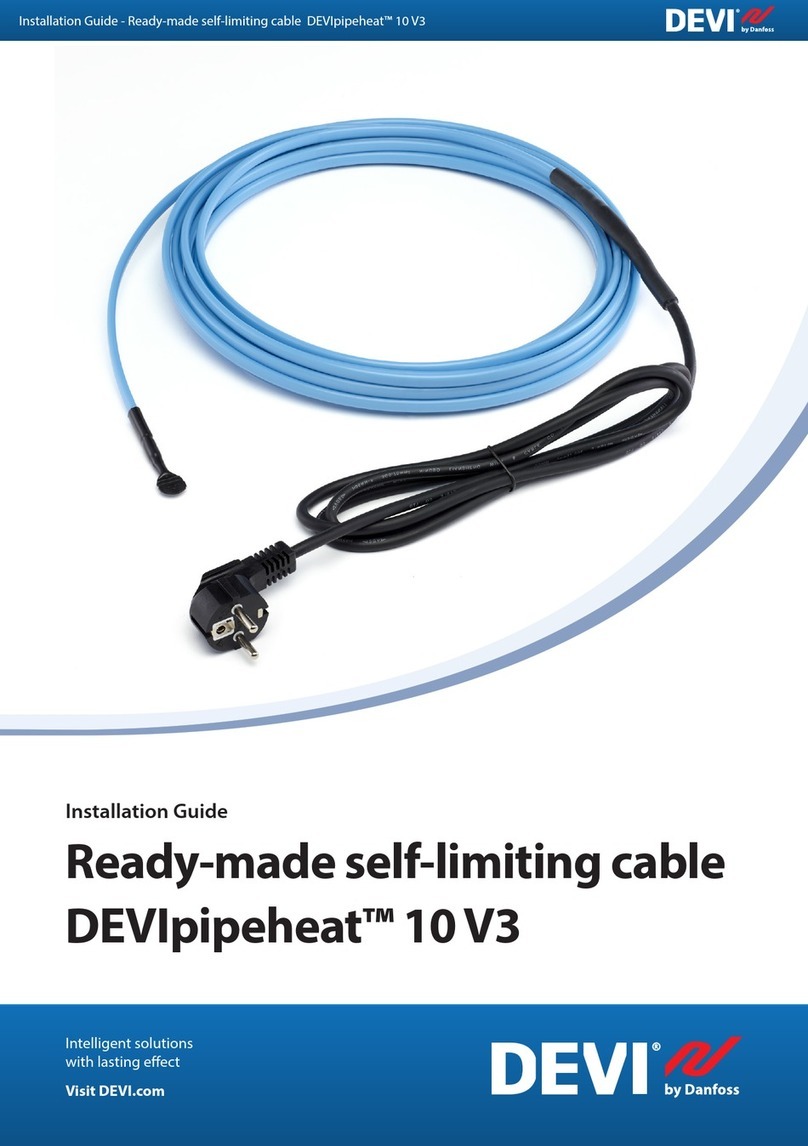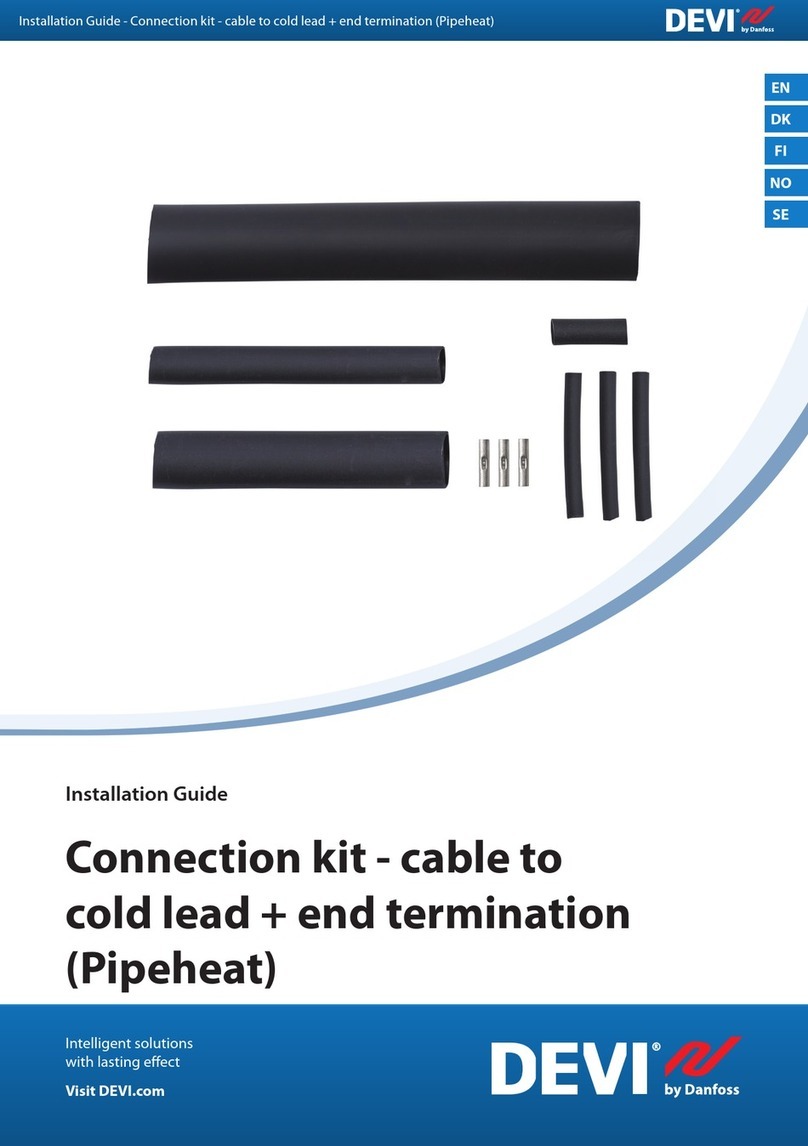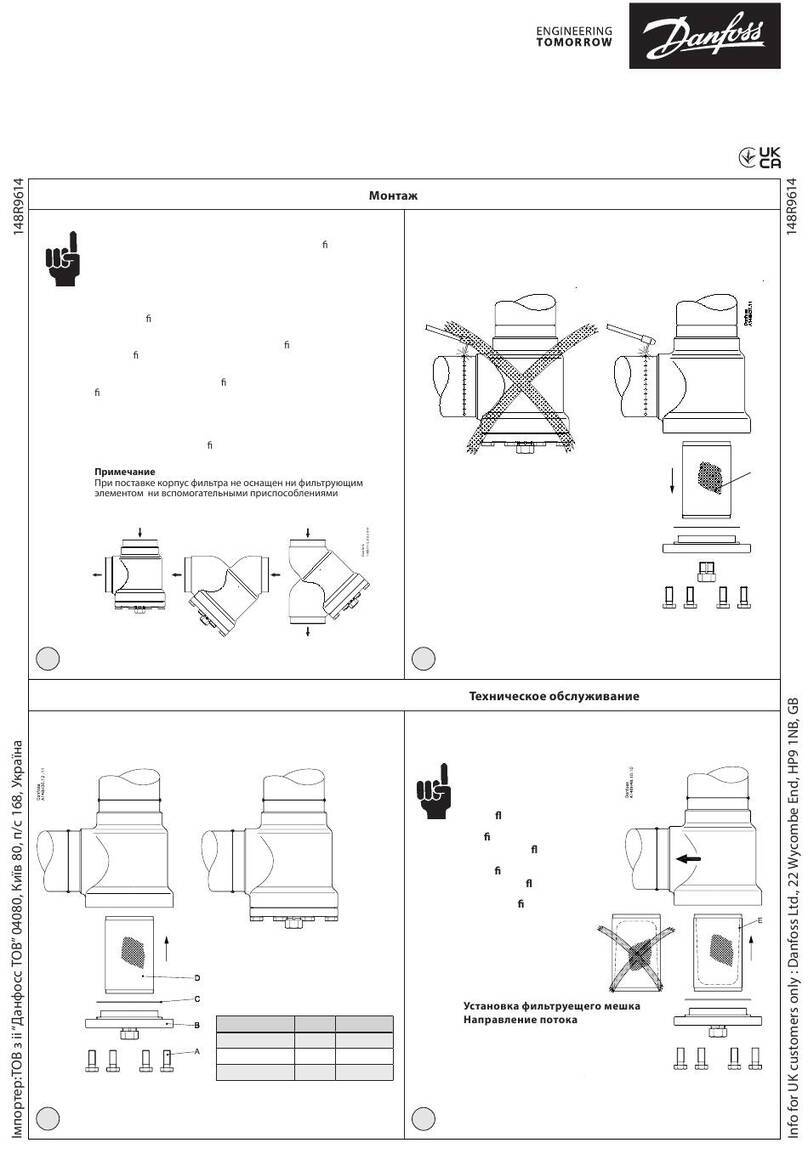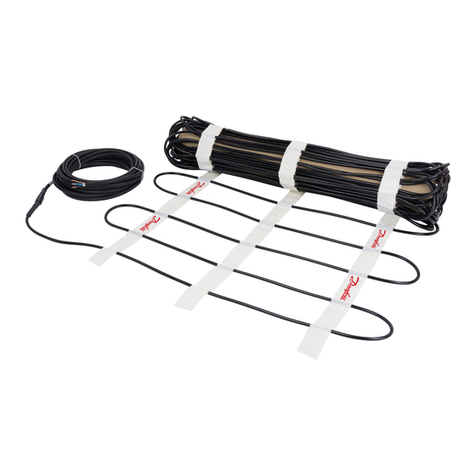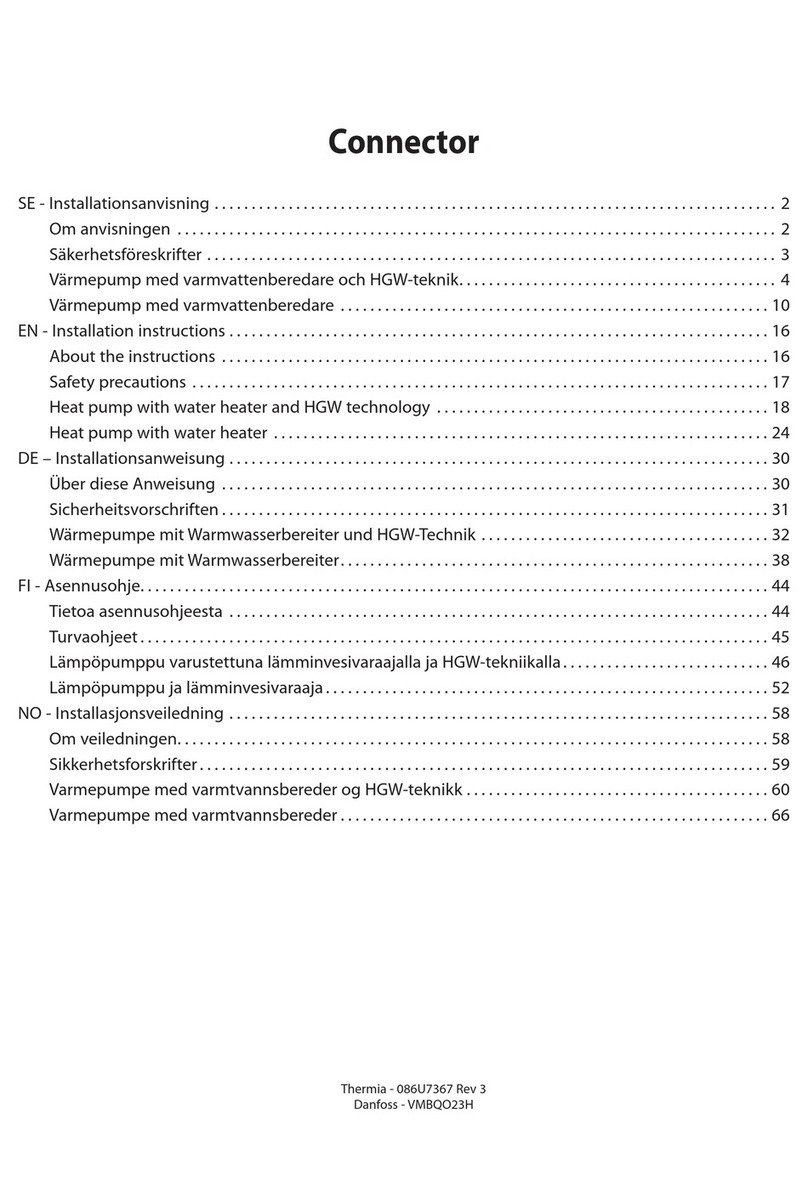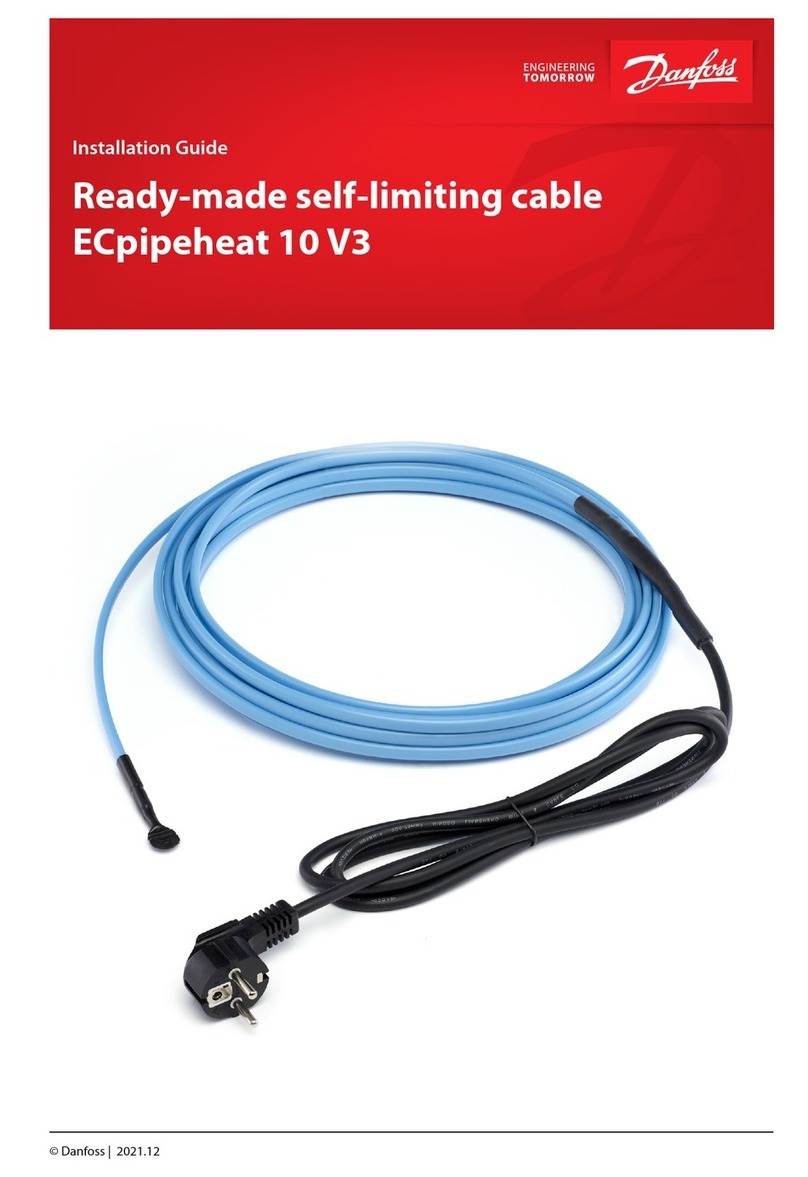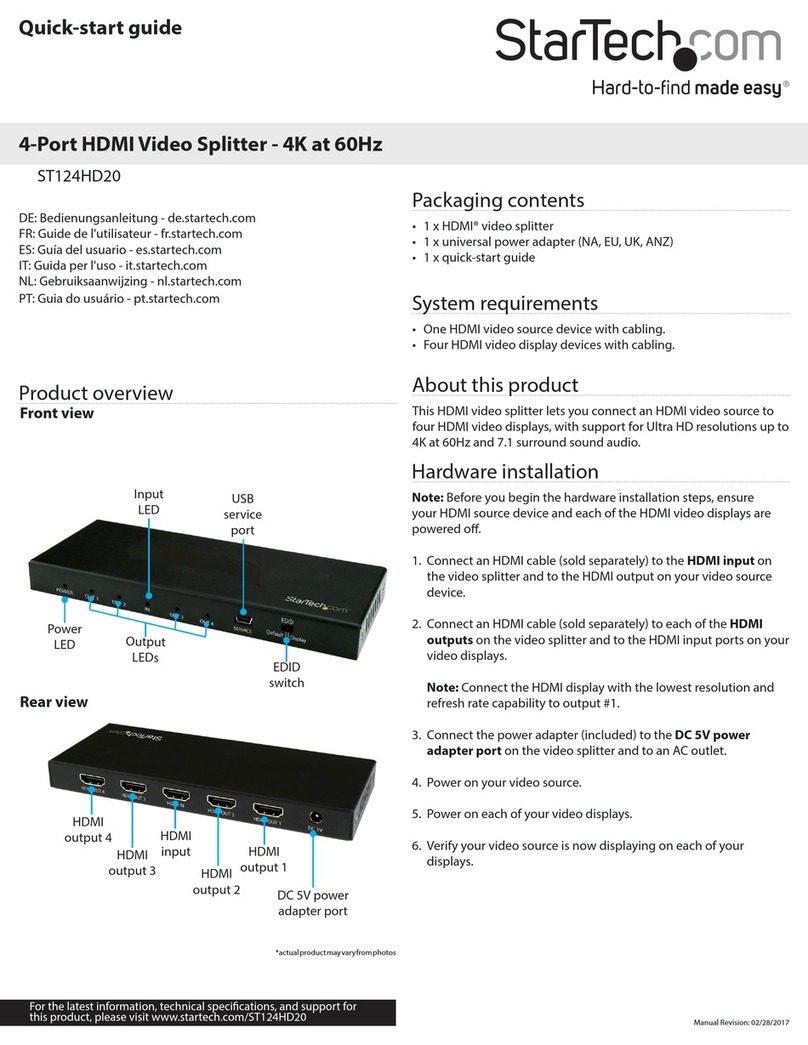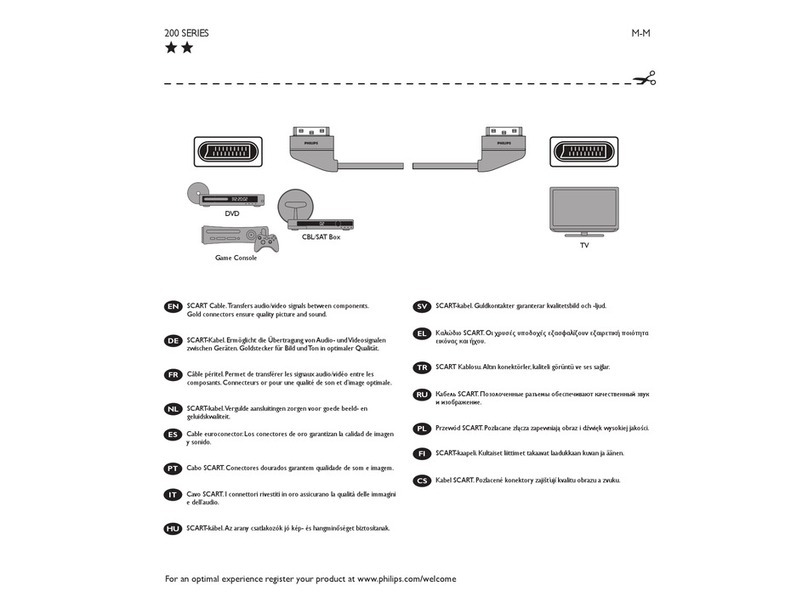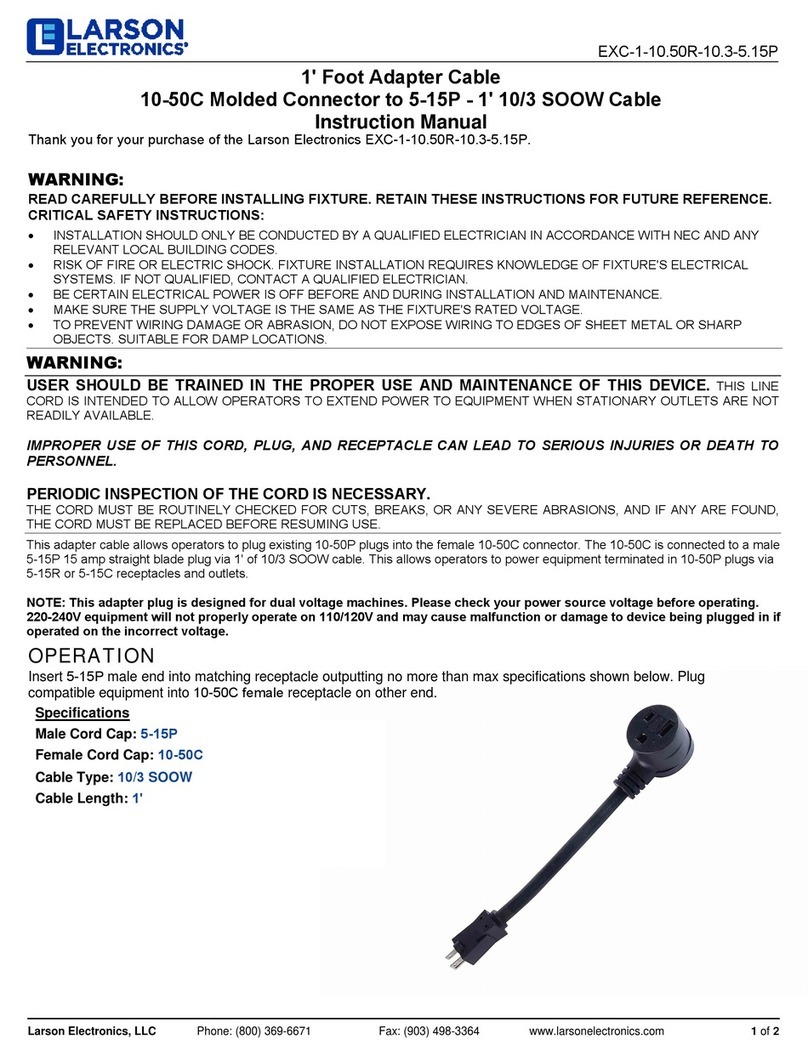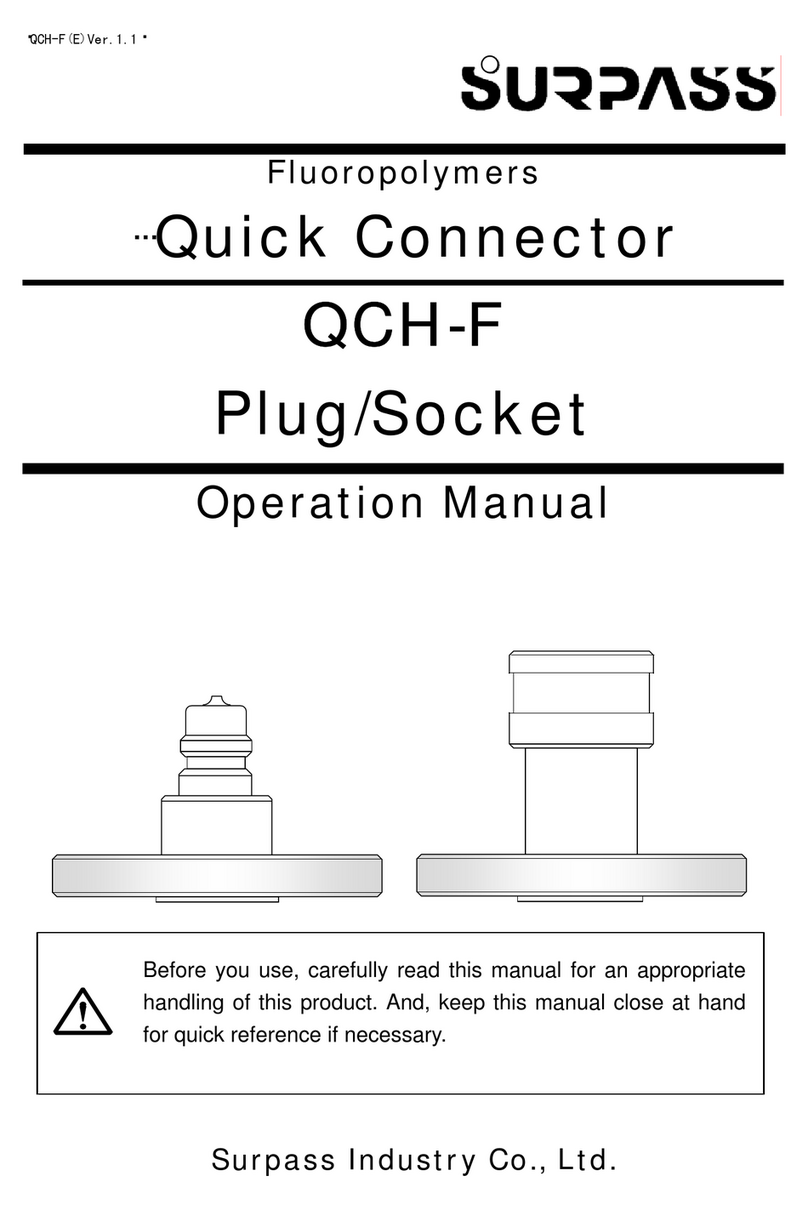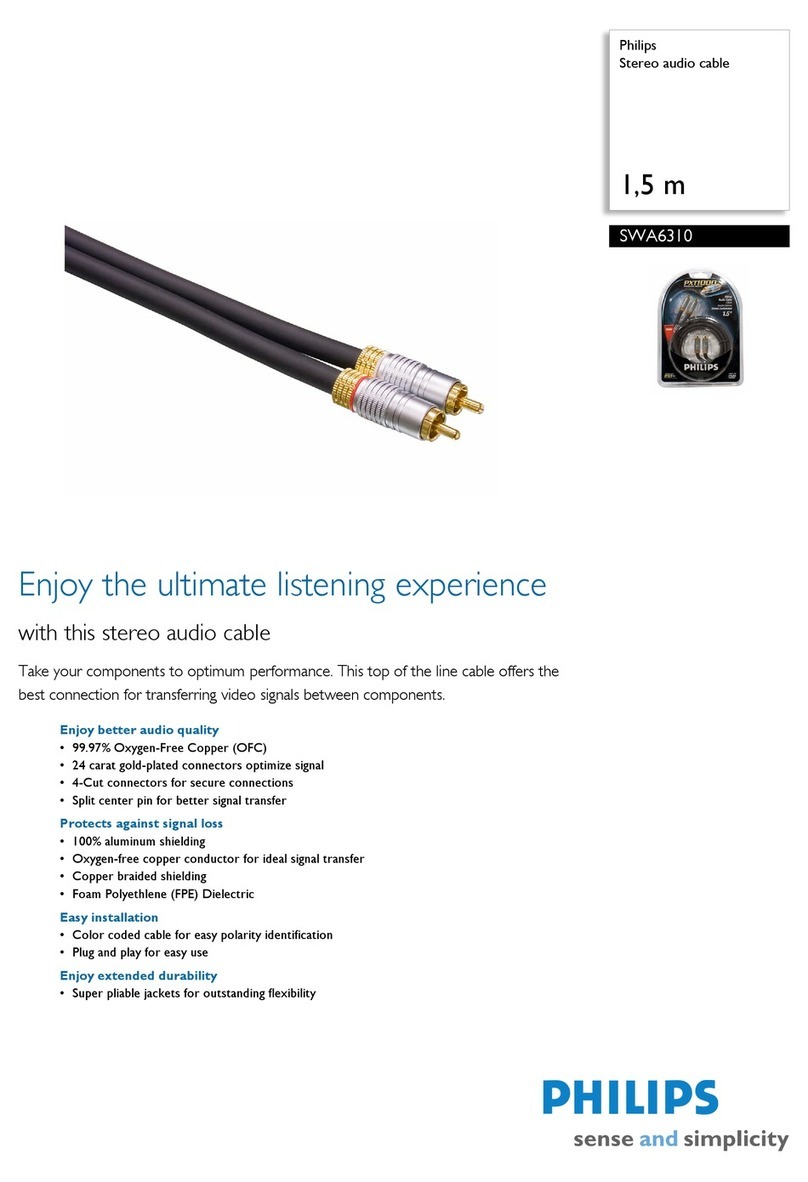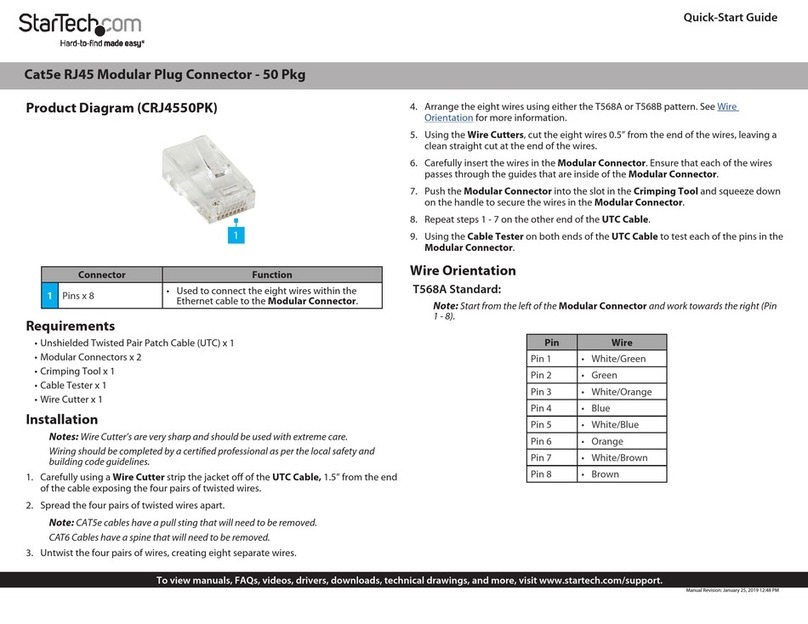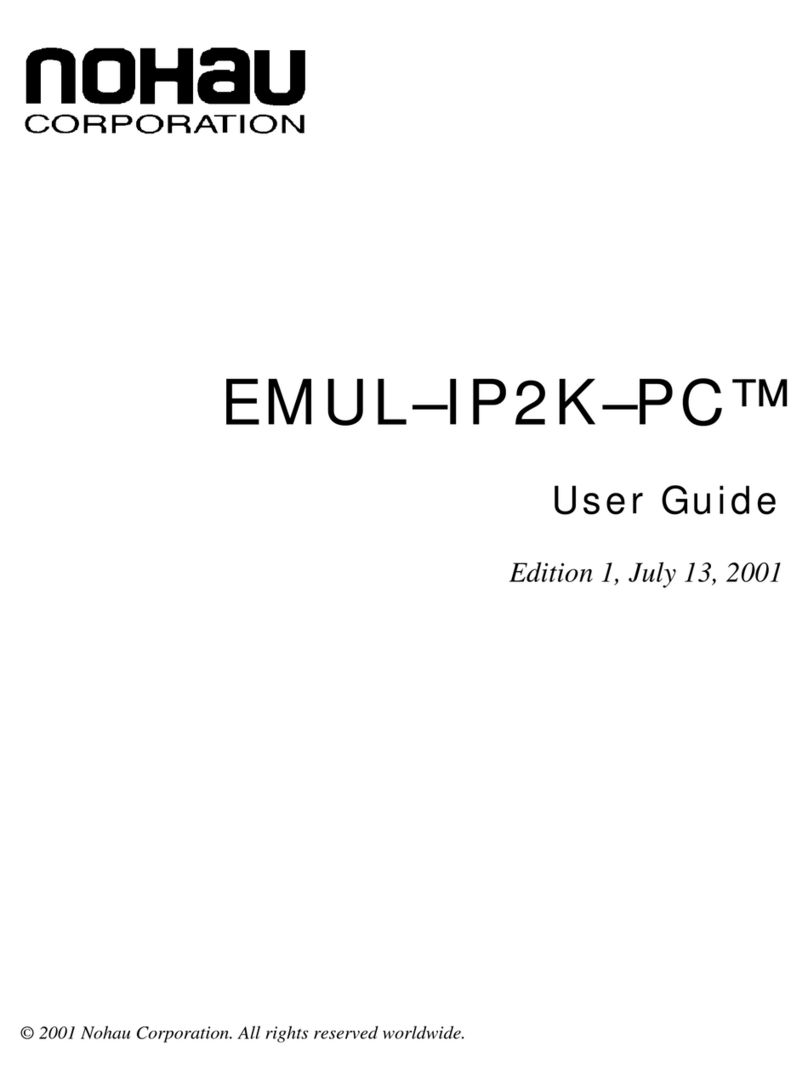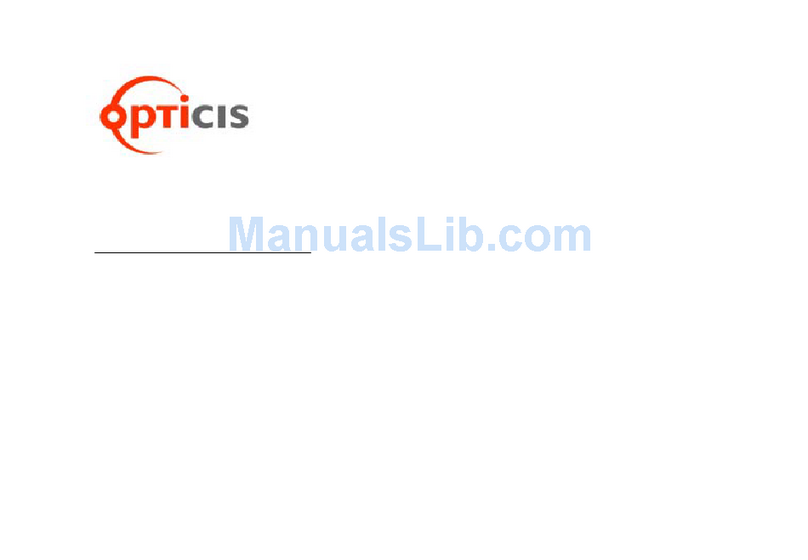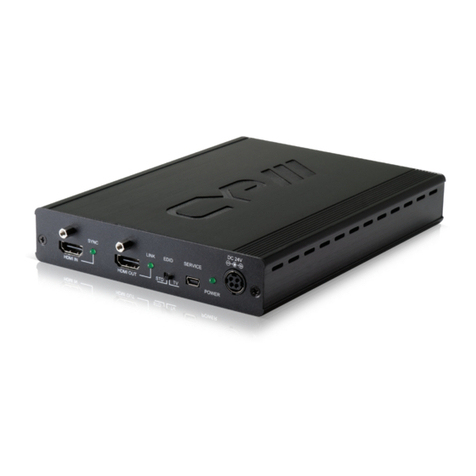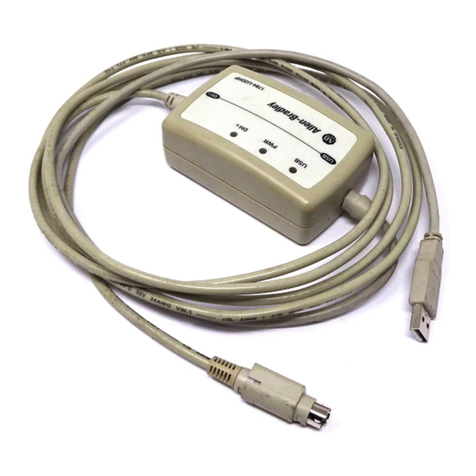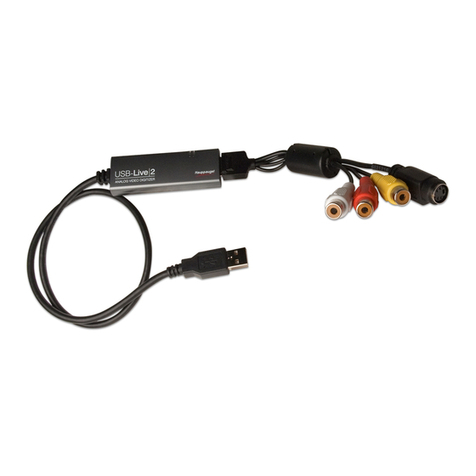
Installation Instruction Danfoss Self-limiting Heating Cables
© Danfoss | FEC | 2019.02 | 5088L8008 / VIAMQ502
GB
1.1 Self-limiting Heating Cables
Introduction
The heating cables are used mainly for ice and snow
melting on roofs and in gutters, down pipes, for
frost protection of pipes and for temperature main-
tenance of the hot-water supply.
There are 4 types of Danfoss self-limiting heating
cables with various effects depending on the ap-
plication.
Cable Construction
Self-limiting heating cables are designed with a
temperature dependant resistant element between
two parallel copper bus wires.
When the bus wires are connected to the mains, a
current goes through the temperature dependant
resistant element which will then heat. As the ele-
ment is heated the resistance value rises causing
the current to decline and heating is reduced. This
explains the self-limiting effect.
The regulation of the output takes place indepen-
dently on the entire length of the cable according
to the actual ambient temperature.
If the ambient temperature rises the heating effect
of the cable is reduced. Due to this self-limiting
capability, overheating of the cable can be avoided,
also if two heating cables are touching or crossing.
As self-limiting heating cables always gives off a
certain amount of effect, it is recommended to
connect the heating cable to a thermostat to be
able to disconnect the current when heating is not
required.
Due to the parallel power supply the heating cable
can be shortened anywhere. This simplifies the
planning and installation.
1.2 Safety Instructions
This appliance can be used by children aged from 8
years and above and persons with reduced physical,
sensory or mental capabilities or lack of experience
and knowledge if they have been given supervision
or instruction concerning use of the appliance in a
safe way and understand the hazards involved.
Children shall not play with the appliance. Cleaning
and user maintenance shall not be made by chil-
dren without supervision.
1
2
5
3
4
1. Outer sheath
2. Screen
3. Insulation
4. Self-limiting heating element
5. Bus wires
